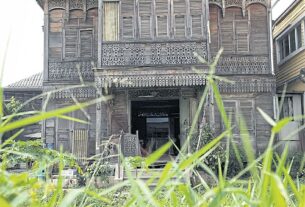Property developers are revisiting plans to launch high-rise condominium projects in Bangkok and will likely focus more on low-rise buildings of no more than eight storeys, due to a court ruling this week concerning regulations restricting the construction of high-rises in narrow streets.
“We will launch our new condominium projects when the projects receive an EIA [environment impact assessment] permit. This will be safer for our business, as the time involved in approving an EIA permit may affect our project design,” said a source at a leading developer.
The Supreme Administrative Court on Tuesday ruled that The Aetas Bangkok, a luxury 24-storey hotel in Soi Ruamrudee, which is at the heart of downtown Bangkok, had been built illegally, as the width of the soi is not at least 10 metres throughout its length, as had been claimed by a former Bangkok governor and an ex-Pathum Wan district chief who approved the construction.
This has affected property developers’ confidence to construct high-rise condominium projects in the capital because, although a project could get through all stages through to the building being complete, it could in some marginal cases face the same outcome as in the Aetas case.
Collier International (Thailand)’s associate director of research, Surachet Kongcheep, commented that the Aetas ruling was a case study for property developers – both residential and hospitality – that when they plan to invest in a high-rise construction, they must ensure that the project design meets all regulations under the Building Act.
“In this case, all of the process approval was authorised by the Bangkok Metropolitan Administration through to the building being completed, but it faced a filing from people in the local community and the court ruled that the building must be reduced from 24 storeys to just eight. This means the process of approving the EIA, and construction under the Building Act, hit a [major] problem,” he said.
In the Aetas case, Sitthichai Tuamsakon, current director of the Pathum Wan district office, said that according to the 1979 Building Act, if a road’s width were less than 10 metres, a building on the road must not exceed 23 metres in height, or about eight storeys.
The building in question has more than 20 floors, so most of it would have to be demolished in order to reduce it to about eight-storeys tall, he added.
In the case, the Central Administrative Court ruled in 2012 in favour of a petition by Foundation for Consumers volunteer lawyer Chalermphong Klabdee, who represented 24 Soi Ruamrudee residents.
The petitioners included the Royal Household Bureau’s deputy lord chamberlain, Khwankeo Vajaroda-ya; police spokesman Lt-General Prawut Thawornsiri; and royal physician Songkhram Sabcharoen.
The petition targeted the then-Bangkok governor and then-Pathum Wan district chief for allowing two companies – Thaptimthorn and Larp-pratharn – to construct the high-rise on Soi Ruamrudee.
The companies were co-defendants in the case.
Source: http://www.nationmultimedia.com/business/Nervous-developers-rethink-plans-in-light-of-Soi-R-30249155.html

